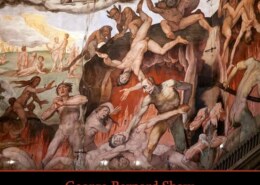In Homer's "The Odyssey," the narrative is driven by key conflicts and rich allusions that deepen its themes. Central to the epic is Odysseus' struggle against nature. He faces numerous obstacles, including the Cyclops, the Sirens, and Poseidon's wrath, which test his cunning and resilience. These eRead more
In Homer’s “The Odyssey,” the narrative is driven by key conflicts and rich allusions that deepen its themes. Central to the epic is Odysseus’ struggle against nature. He faces numerous obstacles, including the Cyclops, the Sirens, and Poseidon’s wrath, which test his cunning and resilience. These encounters symbolize the broader theme of man vs. nature, emphasizing the hero’s perseverance and ingenuity in overcoming natural adversities.
Meanwhile, in Ithaca, Penelope and Telemachus confront societal conflict as they contend with the unruly suitors. This conflict highlights themes of loyalty and the need to restore order. The suitors’ disrespect and disorder threaten the social fabric of Ithaca, making the restoration of justice and rightful leadership a central concern of the narrative.
Odysseus also battles internal conflicts, as his hubris and temptations often clash with his desire to return home. This internal struggle illustrates his complex character development, showing the tension between his heroic traits and human flaws. His journey is not only a physical voyage but also a path of self-discovery and personal growth.
The epic further explores the conflict of man vs. fate, as the gods, especially Athena and Poseidon, play pivotal roles in Odysseus’ journey. Their interventions highlight the tension between human free will and divine control, underscoring the ancient Greek belief in the powerful influence of the gods over mortal destinies.
The narrative is also enriched with numerous allusions. References to the Trojan War and mythological creatures like the Cyclops and Sirens symbolize various human challenges and fears. These allusions provide a deeper connection to the broader Greek mythological tradition and enhance the thematic complexity of the epic.
Additionally, the recurring theme of xenia, or guest-friendship, underscores the cultural norms and ethical expectations of ancient Greek society. The treatment of guests and hosts reflects societal values and the importance of hospitality, further enriching the cultural context of the narrative.
These conflicts and allusions collectively provide a deeper understanding of the characters’ motivations, the epic’s cultural context, and the timeless themes that have cemented “The Odyssey” as a cornerstone of classical literature.
See less

Tristram Shandy" by Laurence Sterne offers a rich satire of contemporary social norms and conventions, particularly in relation to family dynamics and education. ### Family Dynamics 1. *Parental Expectations*: Sterne critiques the rigid expectations placed on family roles. Characters like Walter ShaRead more
Tristram Shandy” by Laurence Sterne offers a rich satire of contemporary social norms and conventions, particularly in relation to family dynamics and education.
### Family Dynamics
1. *Parental Expectations*: Sterne critiques the rigid expectations placed on family roles. Characters like Walter Shandy obsess over idealized parenting theories, reflecting the absurdity of adhering strictly to social norms.
2. *Intergenerational Conflict*: The novel humorously portrays the disconnect between generations, particularly between Tristram and his father, highlighting how different values and ideas create familial tension.
3. *Absurdity of Names*: The importance placed on names and their meanings serves as a satirical commentary on how society assigns significance to superficial aspects of identity, often overshadowing deeper personal qualities.
### Education
1. *Pedagogical Critique*: Sterne mocks contemporary educational practices through the character of Dr. Slop, whose misguided attempts at education demonstrate the flaws in rigid schooling and the absurdity of rote learning.
2. *Anti-Authoritarian Stance*: The novel advocates for a more individualized and holistic approach to education, contrasting with the era’s emphasis on conformity and obedience.
3. *Narrative Structure*: The digressive style itself serves as a form of educational critique, suggesting that learning is not linear or confined to traditional methods, but rather a complex and chaotic process.
### Conclusion
Overall, Sterne’s work challenges and satirizes the norms of his time, encouraging readers to question the validity of established conventions in both family and education. By highlighting their absurdities, “Tristram Shandy” advocates for a more fluid and personal approach to these aspects of life.
See less